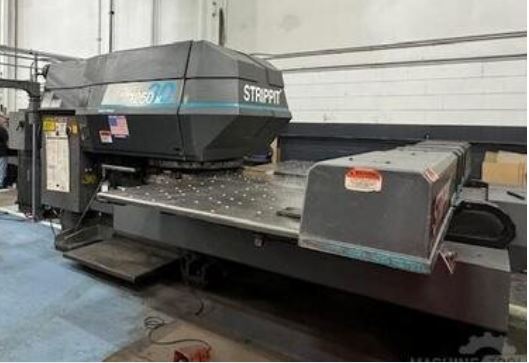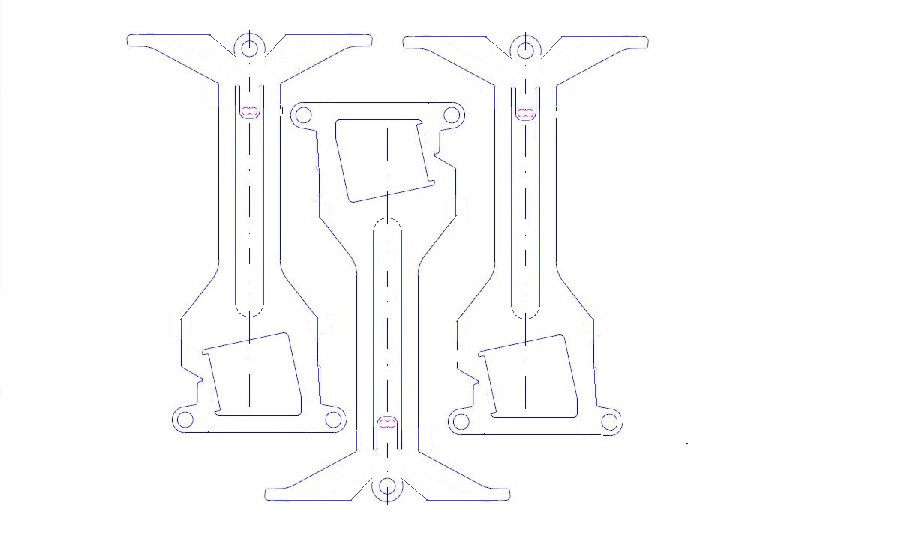The problem that seems to arise with slot car chassis with any of the methods is that end-product characteristics often require additional processing that may be left out due to cost objectives. For example, many chassis that I'm sure are punched/stamped and formed as discussed here require stock of relative mild hardness, and the end results without additional heat treatment are either thick and heavy or bend too easily.
With the new CNC Strippit and Strippit type machines, the blank comes out finished, no other operations required. Fully formed. And even the older machines can handle some pretty hard stock. I personnally have run .032 inch spring steel up to 48 Rc. Stainless steel and 1040 steel are not a problem.
Laser cutting tends to heat the stock to the extent it becomes quite work hardened and needs some annealing treatment afterward. I acquired some DRS wing car chassis bits that I believe are laser cut spring steel. The material is so hard that the chassis are incredibly stiff - to the point of being too stiff and not handling well. So far, I've not encountered an issue of brittleness, but that could be an issue if the chassis at that time had been thinner and lighter. For some reason, the holes and slots are also undersized, and can only be enlarged using abrasive grinding because of material hardness.
Laser cutting does create an embrittlement zone around the cuts, but for the most part, that shouldn't effect the rest of the material. Generally speaking, you can't form sharp angles with hard spring steel, so naturally, wing car chassis will still have to be assembled from a pile of small pieces. There is no good reason for a punched hole to be out of spec.
I haven't seen waterjet used for anything like the stock material used in slot car chassis, although I understand with abrasive cutting fluids something of the sort ought to be possible. I'm also not familiar with the tolerances that can be achieved, and there would still need to be a forming operation for something like a flexi-style chassis.
Waterjet is now being used by some manufacturers to cut the blanks, but you still need a forming tool to do any bending. As the video in post #1 shows, the part comes out fully formed, ready for assembly. The main problem I see is that waterjet cutting leaves a fairly wide and variable kerf. Not a problem until you get to the bushing/bearing holes, which may come out over or under size.
Punching/stamping and laser cutting can also result in excessive bowing and warping which seems to plague everything I've seen but EDM cut chassis.
The new machines use steel strippers backed up with vanadium steel springs, a vast improvement over the neoprene shedders used by the older machines. But still, even with the older machines, I have punched fairly large electronics chassis with less than .005 distortion. Certainly, a slot car chassis could be done with less than .001 total warpage.





















